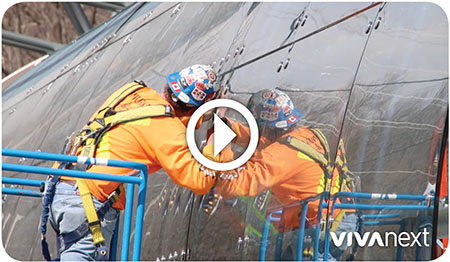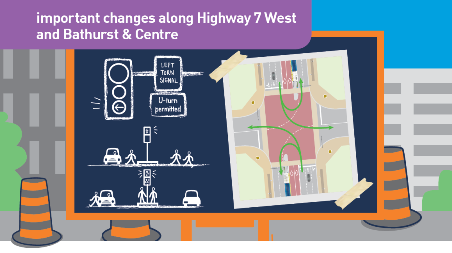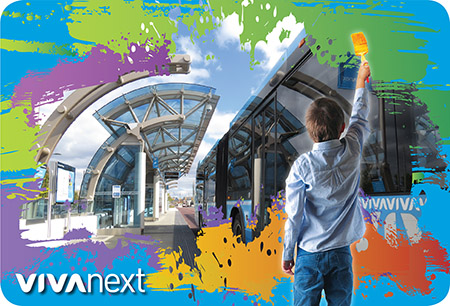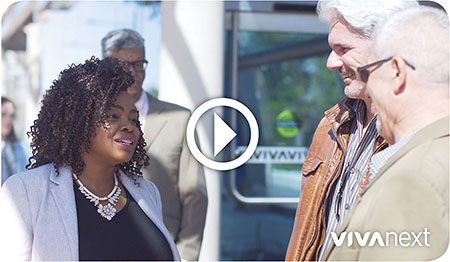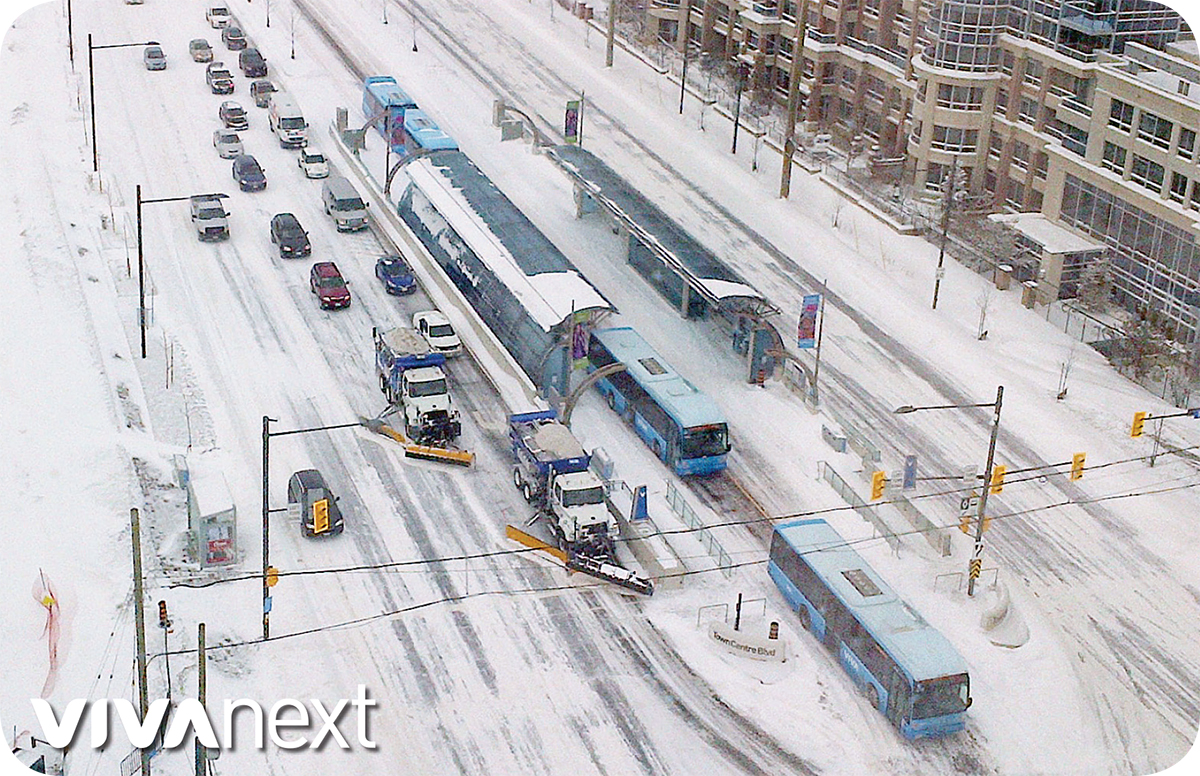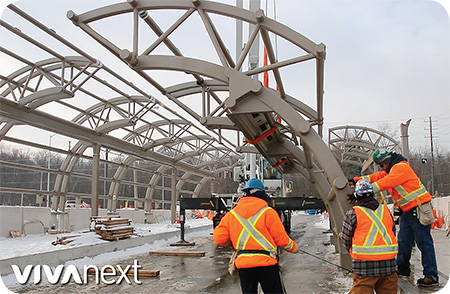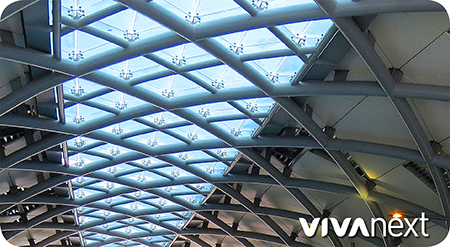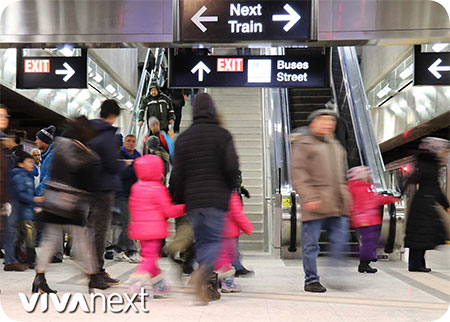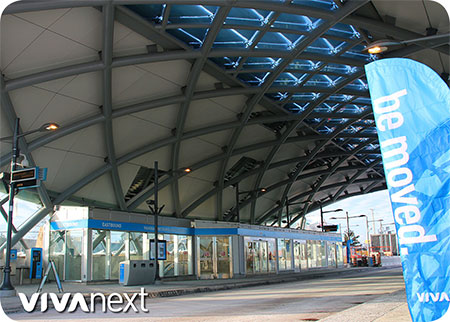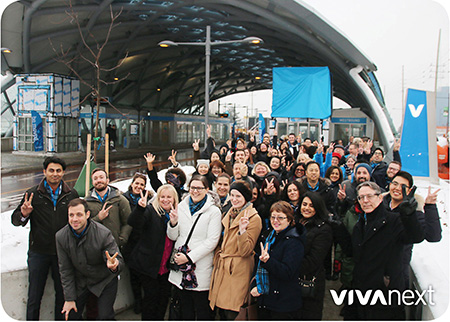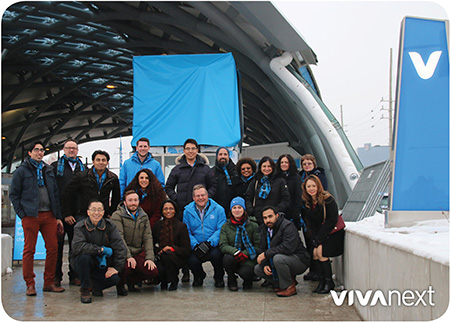The iconic vivastations are starting to appear, as rapidway construction progresses in Bathurst and Centre.
The building of the first station in the area began in 2017 with excavation and construction of the platform on the Bathurst Connector Road, just east of Bathurst Street. Once the rapidway opens for service at the end of 2019, this station will be called, “Bathurst-Highway 7 Station”.
watch our latest video to see this station being built
To see how this station came together, take a look at our latest video, which takes you through some of the major steps involved in building a vivastation, including pouring 8 trucks’ worth of concrete, the careful delivery and installation of the canopies and assembling the beautiful, curved, blue-tinted glass.
why we’re doing this
Once construction of the rapidway is complete and the vivastations are open for service by the end of 2019, bus rapid transit commute times will improve. And with Viva buses travelling in their own dedicated rapidway lanes, it helps to alleviate car congestion.
Not only that, Viva buses can take advantage of priority traffic signals to help them stay on schedule, and variable message signs on station platforms tell transit riders when their next bus is coming.
Bus rapid transit also provides a viable option to get around as the populations increases over the decades to come.
To check out the vivastations and rapidways in action, they are already service in York Region on Highway 7 East in Markham, Highway 7 West between Bowes Road and Edgeley Boulevard in Vaughan and Davis Drive in Newmarket.
For information about ongoing vivaNext projects, be sure to subscribe to email updates, and follow us on Twitter. Questions or comments? Comment below or email us at contactus@vivanext.com.

